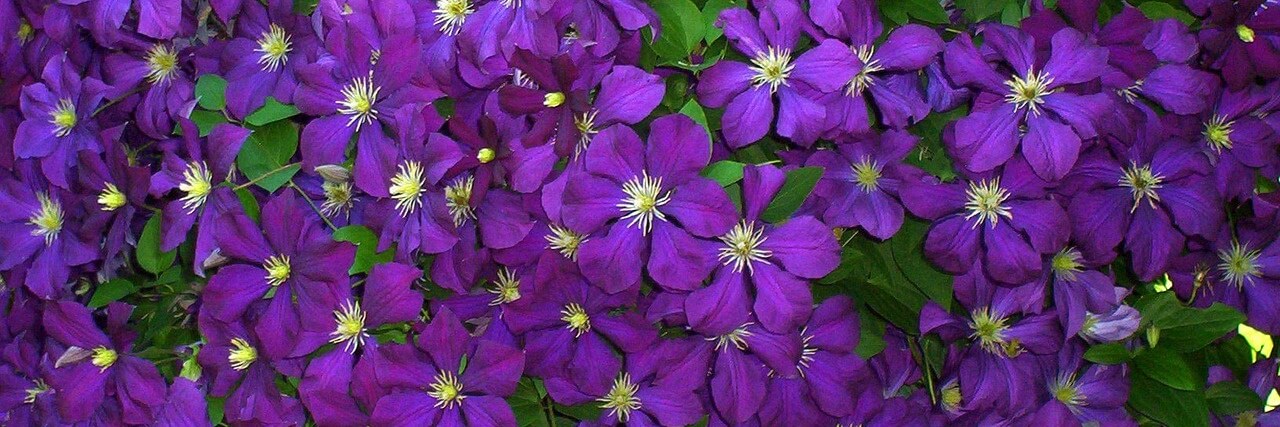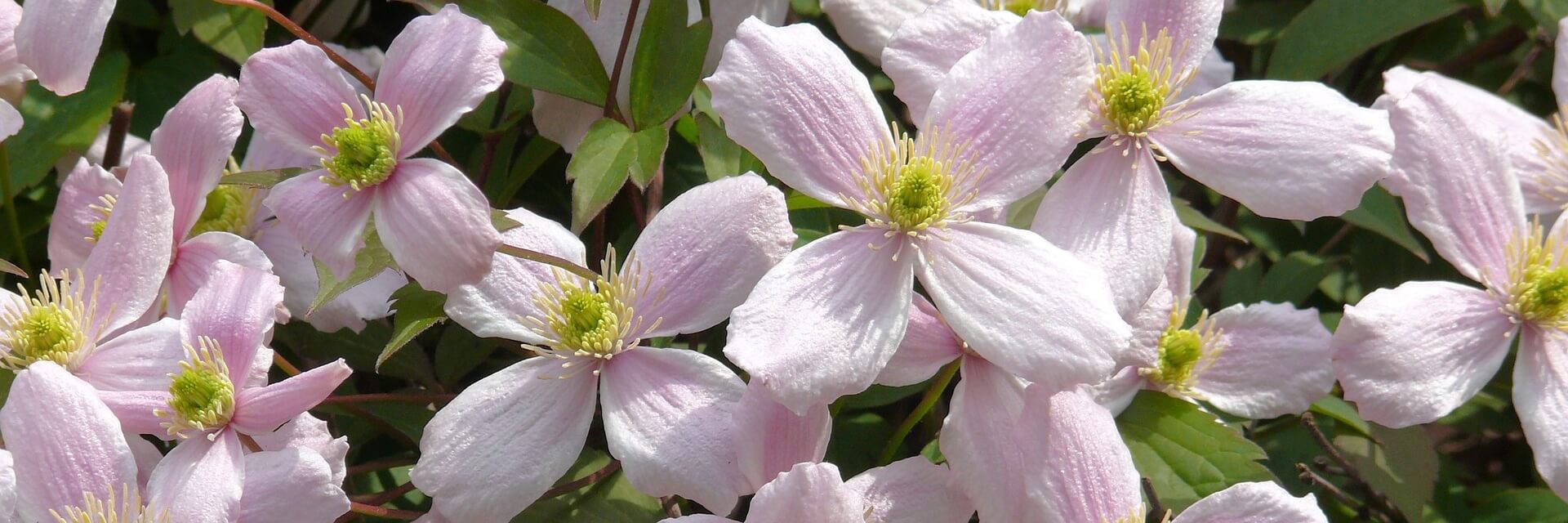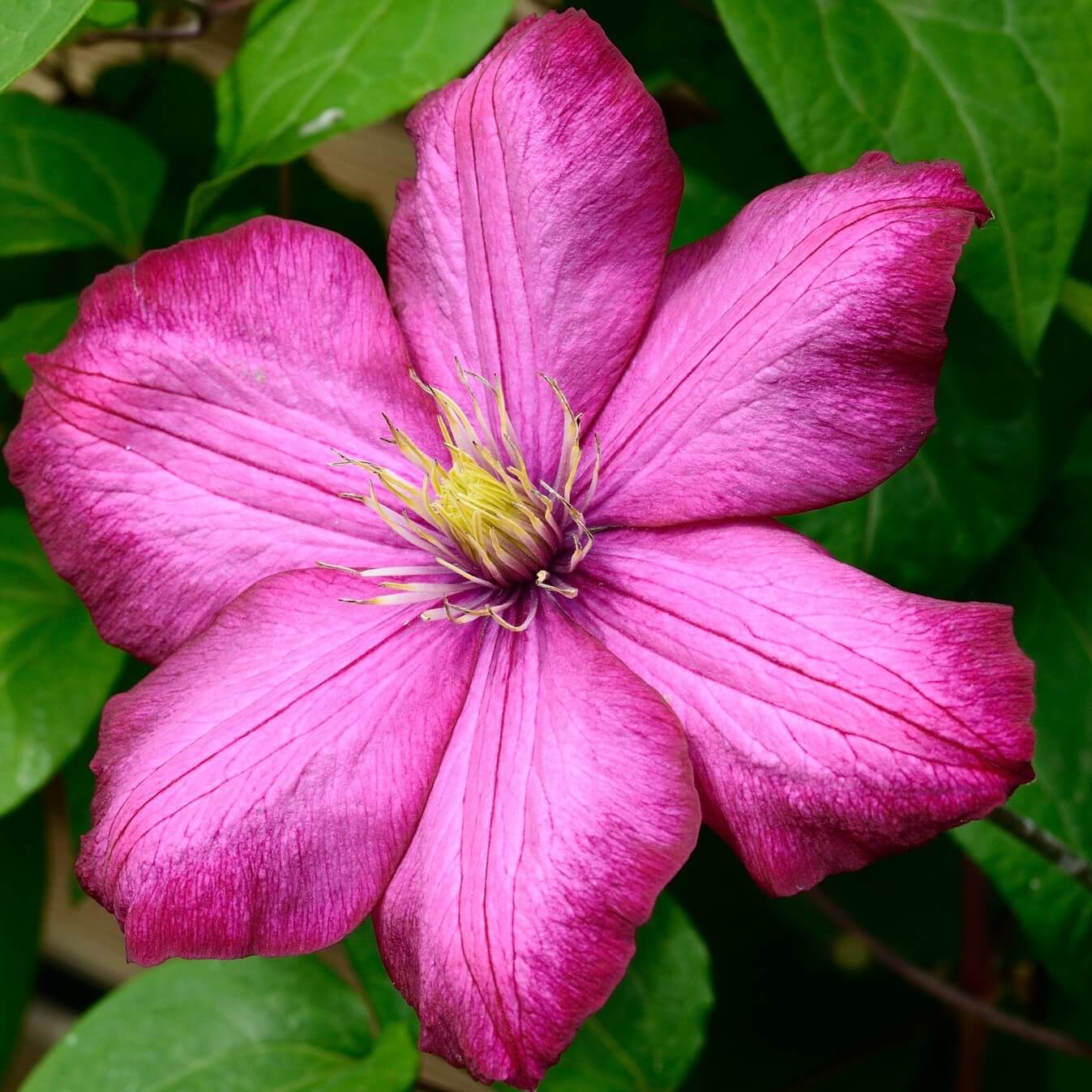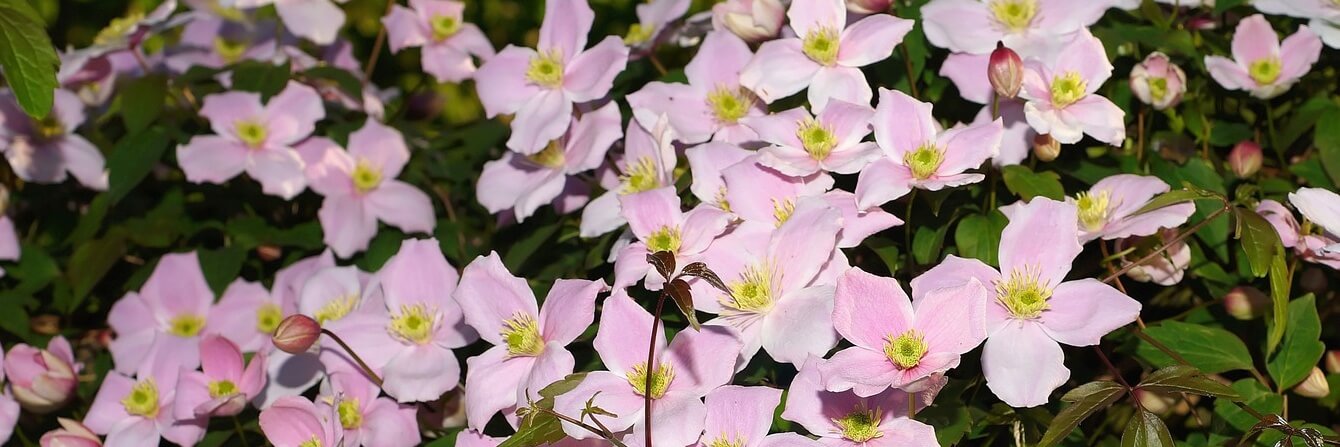
Clematis are immensely popular climbing plants, flowering from late winter to late summer, depending on the variety. Grow them on walls, pergolas, in containers, scrambling through trees and shrubs or left sprawling along the soil as unusual ground cover.
Planting guide
If planting next to a wall or fence, dig the hole at least 60cm (2 feet) away and train the plant along the cane. Clematis perform best when their roots are shaded – either plant in front of them or cover the area with a mulch of stones or pebbles. They need moisture-retentive, but well-drained soil, in full sun or partial shade.
Dig a hole twice as wide as the plant’s pot and half as deep again. Add well rotted organic matter to the bottom of the hole and a handful of general granular fertiliser.
After soaking the plant in its pot, remove it together with its cane. Tease out some of the roots and place in the hole.
Plant large-flowered cultivars that bloom in May/June with their root balls 5-8cm (2-3in) below the soil surface. Herbaceous and evergreen species can be planted with the crown at soil level. Fill the hole with a mixture of soil and compost and water in well.
If planting in containers, choose a smaller-growing cultivar, using a pot at least 45cm (18in) deep and wide with a soil-based potting compost such as John Innes No 2.

Care
In late winter or early spring, apply a potassium-rich fertiliser (such as rose fertiliser) and mulch afterwards with well-rotted manure, leafmould or compost. Water regularly during dry weather in the first few seasons.
For container plants, top dress each spring by replacing the top 2.5cm (1 inch) of soil with fresh potting compost. Protect roots in winter from frost by wrapping the pot in bubble wrap.
Water thoroughly and feed monthly during the growing season.
Pruning
Clematis is notorious for being difficult to prune but that’s not the case, as long as you know which pruning group it belongs to (based on when it flowers).
When first planted, cut all clematis back to 15-30cm (6”-1ft) from soil level in February or March, cutting just above a bud. This will encourage branching and more flowers.
Pruning groups:
Group 1 – flowering in spring on shoots produced the previous season, such as C. montana, C. cirrhosa, C. alpina. Prune just after flowering in mid- to late spring if needed – no regular pruning is essential.
Group 2 – large-flowered hybrids, blooming May/June. Prune in February/March and after the first flush of flowers in early summer. The aim is to keep a framework of old wood and promote new shoots.
Group 3 – plants that flower on that season’s growth and herbaceous clematis. Cut back hard in February/March 15-30cm (6in-1ft) from soil level to healthy buds. If left unpruned, they will continue growing from where they left off the previous season, flowering well above eye level and with a bare base.
Small-flowered clematis with attractive seedheads can just be trimmed back to the main framework of branches.
